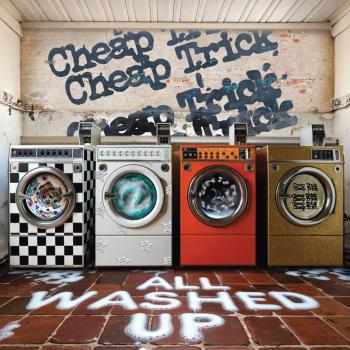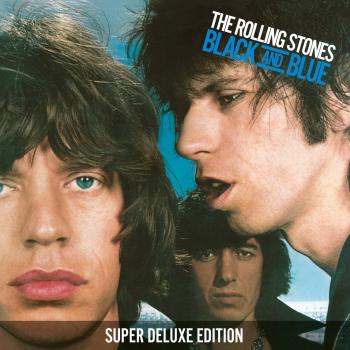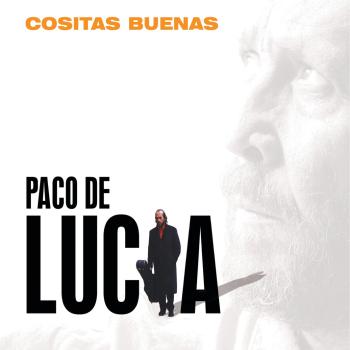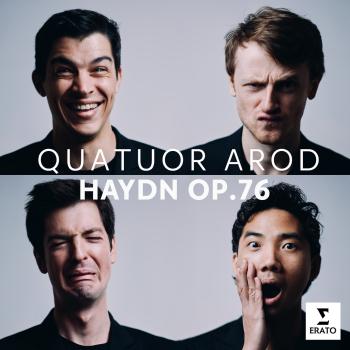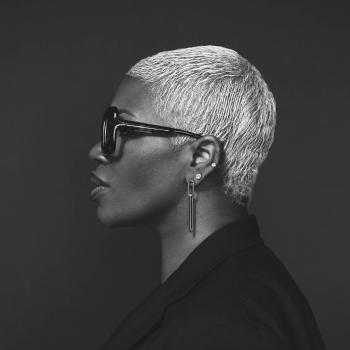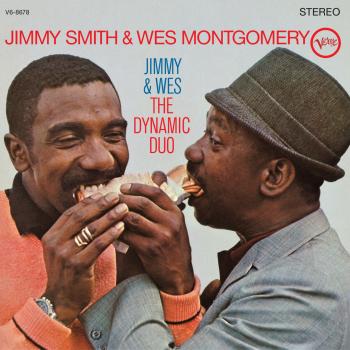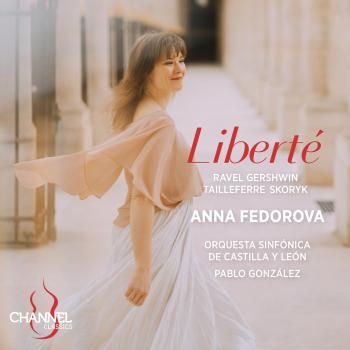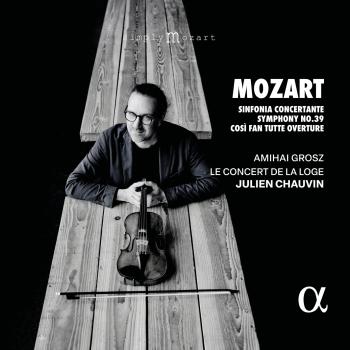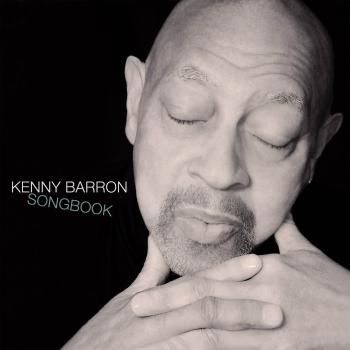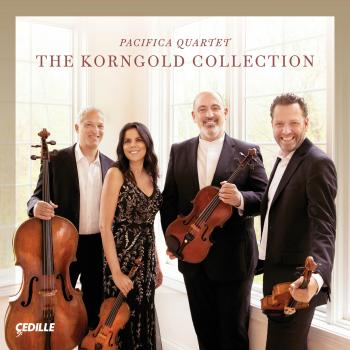
The Return Of The 5,000 Pound Man Rahsaan Roland Kirk & Al Hibbler
Album info
Album-Release:
1976
HRA-Release:
13.07.2012
Label: Warner Music Group
Genre: Jazz
Subgenre: Hard Bop
Artist: Rahsaan Roland Kirk & Al Hibbler
Composer: Rahsaan Roland Kirk
Album including Album cover
I`m sorry!
Dear HIGHRESAUDIO Visitor,
due to territorial constraints and also different releases dates in each country you currently can`t purchase this album. We are updating our release dates twice a week. So, please feel free to check from time-to-time, if the album is available for your country.
We suggest, that you bookmark the album and use our Short List function.
Thank you for your understanding and patience.
Yours sincerely, HIGHRESAUDIO
- 1 Theme For The Eulipions 09:44
- 2 Sweet Georgia Brown 04:45
- 3 I'll Be Seeing You 06:09
- 4 Loving You 04:48
- 5 Goodbye Pork Pie Hat 06:20
- 6 There Will Never Be Another You 05:08
- 7 Giant Steps 06:14
Info for The Return Of The 5,000 Pound Man
The Return of the 5000 Lb. Man was Rahsaan Roland Kirk's first album for Warner Brothers, recorded before the stroke that impaired him. Kirk is at full creative and musical strength. These seven tracks are an utter astonishment. Kirk's playing of saxophones, harmonica, flutes, and euphonium is deep, soulful, and even profound in places. 'Theme for the Eulipions' (which opens the album), 'Giant Steps,' and 'There Will Never Be Another You' features an all-star band that includes Charlie Persip, a young Hilton Ruiz, bassist Buster Williams, Romeo Perique on baritone saxophone, and Howard Johnson on tuba. The version of 'Sweet Georgia Brown,' with its wacky percussion and whistling, is so utterly joyful and funky it's perhaps the definitive jazz version of the tune. But it's the readings of Minnie Riperton's 'Loving You' and Charles Mingus' 'Goodbye Porkpie Hat' that take the album to an entirely new place. They are, though very different from one another, so utterly moving and aesthetically beautiful, they elevate music to the level of poetry. This is one that's utterly necessary for fans, and a very fitting intro for the novice. (Thom Jurek, All Music Guide)
'Very mellow, very sweet, very funny, and very beautiful. And not just a bit crazy. Let's go over the tracklist: 'Theme for the Eulipions.' Spoken female matronly hipster recitation intro/outro (the outstanding Betty Neals), massed choral vocals, like Mingus dirges. 'I've seen him at the airport, but never out here in the street. Calls himself a spiritual guide...A EU-LIP-I-ON...says this is his duty-free gift for the traveler.' Then, a cover of 'Sweet Georgia Brown.' Hm! Definitely takes me back to the '70s, and I gotta admit, I can't think of the song without thinking of seeing the Harlem Globetrotters. This version isn't too different from the version they would come in to. Side two has a cover of Mingus' 'Goodbye Pork Pie Hat' with the group singing the lyrics to the song. What lyrics, you ask? Well, apparently Kirk decided to write lyrics to this classic homage to Lester Young, 15 some-odd years after the original was written! He then does the same thing with 'Giant Steps.' A choir sings the lyrics! It's a slow version of 'Giant Steps,' but the steps are still giant. This would be an underwhelming first place to start, but once you're on board the Kirk train, it's hard not to be totally delighted with this one. Like many of his great works, it's mainstream and weird in equal doses!' (Chris Sienko, Blastitude)
Roland Kirk, tenor saxophone, manzello, stritch, clarinet, flute, harmonica, euphonium
Howard Johnson, tuba (tracks 1, 6 & 7)
Romeo Penque, baritone saxophone, oboe (tracks 1, 6 & 7)
Hilton Ruiz, piano, celesta (tracks 1 & 4-7)
Buster Williams, bass (tracks 1, 6 & 7)
Charlie Persip, drums (tracks 1, 6 & 7)
Joe Habao Texidor, percussion, vocals (tracks 1 & 4-7)
Betty Neals, recitation (track 1)
Maeretha Stewart, vocals (track 1)
Hank Jones, piano (track 2)
Milt Hinton, bass (track 2)
Fred Moore, washboard (track 2)
Wilton Eaton, whistling (track 2)
Trudy Pitts, organ (track 3)
William Butler, guitar (tracks 3-5)
Bill Carney, drums (tracks 3-5)
Arthur Jenkins, keyboards (tracks 4 & 5)
Matathias Pearson, bass (tracks 4 & 5)
Jerry Griffin, drums (tracks 4 & 5)
Warren Smith, percussion (tracks 4 & 5)
Digitally remastered.
Roland Kirk
7 August 1936, Columbus, Ohio, USA, d. 5 December 1977, Bloomington, Indiana, USA. Originally named ‘Ronald’, Kirk changed it to ‘Roland’ and added ‘Rahsaan’ after a dream visitation by spirits who ‘told him to’. Blinded soon after his birth, Kirk became one of the most prodigious multi-instrumentalists to work in jazz, with a career that spanned R&B, bop and the ‘New Thing’ jazz style. According to Joe Goldberg’s sleeve notes for Kirk’s Work (1961), Kirk took up trumpet at the age of nine after hearing the bugle boy at a summer camp where his parents acted as counsellors. He played trumpet in the school band, but a doctor advised against the strain trumpet playing imposes on the eyes. At the Ohio State School for the Blind, he took up saxophone and clarinet from 1948. By 1951 he was well known as a player and was leading his own dance band in the locality. Kirk’s ability to play three instruments simultaneously gained him notoriety. Looking through the ‘scraps’ in the basement of a music store, Kirk found two horns believed to have been put together from different instruments, but which possibly dated from late nineteenth-century Spanish military bands. The manzello was basically an alto saxophone with a ‘large, fat, ungainly’ bell. The strich resembled ‘a larger, more cumbersome soprano’. He found a method of playing both, plus his tenor, producing a wild, untempered ‘ethnic’ sound ideal for late-60s radical jazz. He also soloed on all three separately and added flute, siren and clavietta (similar to the melodica used by Augustus Pablo and the Gang Of Four) to his armoury. With all three horns strung around his neck, and sporting dark glasses and a battered top hat, Kirk made quite a spectacle.
The real point was that, although he loved to dally with simple R&B and ballads, he could unleash break-neck solos that sounded like a bridge between bebop dexterity and avant garde ‘outness’. His debut for a properly distributed label - recorded for Cadet Records in Chicago in June 1960 at the behest of Ramsey Lewis - provoked controversy, some deriding the three-horn-trick as a gimmick, others applauding the fire of his playing. In 1961, he joined the Charles Mingus Workshop for four months, toured California and played on Oh Yeah! He also played the Essen Jazz Festival in Germany. In 1963, he began the first of several historic residencies at Ronnie Scott’s club in London. Despite later guest recordings with Jaki Byard (who had played on his Rip Rig & Panic) and Mingus (at the 1974 Carnegie Hall concert), Kirk’s main focus of activity was his own group, the Vibration Society, with whom he toured the world until he suffered his first stroke in November 1975, which paralysed his right side. With characteristic single-mindedness, he taught himself to play with his left hand only and started touring again. A second stroke in 1977 caused his death.
Long before the 80s ‘consolidation’ period for jazz, Kirk presented a music fully cognizant of black American music, from Jelly Roll Morton and Louis Armstrong on through Duke Ellington and John Coltrane; he also paid tribute to the gospel and soul heritage, notably on Blacknuss, which featured songs by Marvin Gaye, Smokey Robinson and Bill Withers. Several of his tunes - ‘The Inflated Tear’, ‘Bright Moments’, ‘Let Me Shake Your Tree’, ‘No Tonic Pres’ - have become jazz standards. His recorded legacy is uneven, but it contains some of the most fiery and exciting music to be heard. Source: The Encyclopedia of Popular Music by Colin Larkin.
This album contains no booklet.

